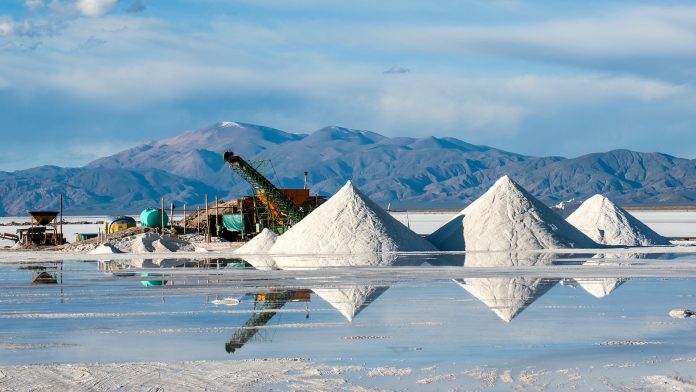What are the hydrological impacts of lithium mining, and how can this essential driving force of the green transition remain sustainable?
Lithium will play a crucial role in ensuring the planet’s transition to clean energy; however, concerns have been raised about the long-term sustainability of lithium mining. Lithium is a vital component of green technologies, such as lithium-ion batteries, that will power the conversion to a net zero tomorrow. As our dependence on lithium will grow exponentially in the coming years, it is vital that this critical raw material is obtained responsibly.
Researchers at the University of Massachusetts Amherst and the University of Alaska Anchorage have performed a study that investigates these potential issues. Their first-of-its-kind research analysed the hydrological impacts of lithium mining in the Salar de Atacama in Chile, discovering mining itself was not intrinsically responsible for hydrological issues.
Salar de Atacama – the source of a green tomorrow
The Salar de Atacama is richly-imbued with lithium – home to more than 40% of the Earth’s proven lithium deposits. This goliath Chilean salt flat is approximately 850 square miles, hosts various unique wildlife preserves, and is the ancestral home of several Atacameño indigenous communities.
Lithium is predominantly extracted from the Earth via the process of pumping water deep into the salt beds to accumulate salt and minerals, which are then transferred to the surface. This concoction of salt and minerals rests for around 12 months on the surface for the water to evaporate and then is produced into lithium. Estimates suggest it takes around 500,000 gallons of water to extract 1 ton of lithium, roughly equivalent to 190,000 mobile phones.
The Salar de Atacama’s composition makes it idyllic for lithium production. In addition to its abundance of “white gold”, its climate comprised of searing heat and sparse rainfall significantly accelerate the evaporation process.
However, due to the salt flats being so ecologically sensitive and relying on scarce amounts of fresh water supplies, some have argued that employing vast amounts of water in the Salar de Atacama jeopardises the ecological health of the region and the indigenous ways of life. But, until now, no comprehensive research has analysed how water use or lithium mining affects the Salar de Atacama to reinforce these claims.
Brendan Moran, a postdoctoral geoscience associate at the University of Massachusetts Amherst and the lead author of the paper, commented: “To understand the environmental effect of lithium mining, we need to understand the hydrology in the region the lithium is found. That hydrology is much more complex than previous researchers have given it credit for.”
A dive into Salar de Atacama’s hydrology
The team’s findings are the culmination of over a decade of research and address two of the most critical factors that earlier studies have failed to investigate that determine if lithium is obtained responsibly. Firstly, the age of the water the lithium is found in, and, secondly, the source of the water.
Previous investigations of the Salar de Atacama theorised that the infrequent rainfall and seasonal runoff from nearby mountain ranges that ring it were solely responsible for the salt flat’s water levels, but that is not the case.
For their study, the researchers employed a plethora of geochemical tracers that can track the path that water takes on its way to the Salar de Atacama, in addition to the average age of water within different water bodies, such as surface waters and sub-surface aquifers.
They also utilised water usage data from the Chilean government and satellite imagery, which enabled them to examine the evolving extent of wetlands throughout the past 40 years, rain gauges, and satellite measurements to monitor precipitation over the same period. The results illuminated that although localised, recent rainfall is essential, over 50% of the freshwater supplementing the wetlands and lagoons is at least 60 years old.
Moran explained: “Because these regions are so dry, and the groundwater so old, the overall hydrological system responds very slowly to changes in climate, hydrology and water usage.”
The results suggest that although the total water usage in the Salar de Atacama is exceeding its resupply, the impact of lithium mining is comparatively small, accounting for less than 10% of freshwater usage. Moreover, lithium brine extraction does not correlate with changes in either surface-water features or basin-water storage.
The team explained that the most significant risk is imposed by short-term climate changes, such as the recent major drought and extreme precipitation events, which can cause considerable and rapid changes to the surface water and the habitats they support.
Due to climate change being likely to exacerbate major events like droughts in the region and further stress the area’s water budget, the researchers advocate that water usage should be monitored on a much longer time scale than is currently performed.







